Mining the bitter melon (momordica charantia l.) seed transcriptome by 454 analysis of non-normalized and normalized cDNA populations for conjugated fatty acid metabolism-related genes
- PMID: 21080948
- PMCID: PMC3012625
- DOI: 10.1186/1471-2229-10-250
Mining the bitter melon (momordica charantia l.) seed transcriptome by 454 analysis of non-normalized and normalized cDNA populations for conjugated fatty acid metabolism-related genes
Abstract
Background: Seeds of Momordica charantia (bitter melon) produce high levels of eleostearic acid, an unusual conjugated fatty acid with industrial value. Deep sequencing of non-normalized and normalized cDNAs from developing bitter melon seeds was conducted to uncover key genes required for biotechnological transfer of conjugated fatty acid production to existing oilseed crops. It is expected that these studies will also provide basic information regarding the metabolism of other high-value novel fatty acids.
Results: Deep sequencing using 454 technology with non-normalized and normalized cDNA libraries prepared from bitter melon seeds at 18 DAP resulted in the identification of transcripts for the vast majority of known genes involved in fatty acid and triacylglycerol biosynthesis. The non-normalized library provided a transcriptome profile of the early stage in seed development that highlighted the abundance of transcripts for genes encoding seed storage proteins as well as for a number of genes for lipid metabolism-associated polypeptides, including Δ12 oleic acid desaturases and fatty acid conjugases, class 3 lipases, acyl-carrier protein, and acyl-CoA binding protein. Normalization of cDNA by use of a duplex-specific nuclease method not only increased the overall discovery of genes from developing bitter melon seeds, but also resulted in the identification of 345 contigs with homology to 189 known lipid genes in Arabidopsis. These included candidate genes for eleostearic acid metabolism such as diacylglycerol acyltransferase 1 and 2, and a phospholipid:diacylglycerol acyltransferase 1-related enzyme. Transcripts were also identified for a novel FAD2 gene encoding a functional Δ12 oleic acid desaturase with potential implications for eleostearic acid biosynthesis.
Conclusions: 454 deep sequencing, particularly with normalized cDNA populations, was an effective method for mining of genes associated with eleostearic acid metabolism in developing bitter melon seeds. The transcriptomic data presented provide a resource for the study of novel fatty acid metabolism and for the biotechnological production of conjugated fatty acids and possibly other novel fatty acids in established oilseed crops.
Figures

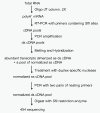
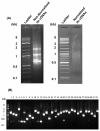
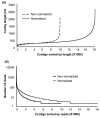

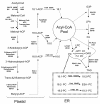
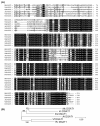

Similar articles
-
Identification of hydroxy fatty acid and triacylglycerol metabolism-related genes in lesquerella through seed transcriptome analysis.BMC Genomics. 2015 Mar 24;16(1):230. doi: 10.1186/s12864-015-1413-8. BMC Genomics. 2015. PMID: 25881190 Free PMC article.
-
Transcriptome Analysis and Identification of Lipid Genes in Physaria lindheimeri, a Genetic Resource for Hydroxy Fatty Acids in Seed Oil.Int J Mol Sci. 2021 Jan 6;22(2):514. doi: 10.3390/ijms22020514. Int J Mol Sci. 2021. PMID: 33419225 Free PMC article.
-
Molecular analysis of a bifunctional fatty acid conjugase/desaturase from tung. Implications for the evolution of plant fatty acid diversity.Plant Physiol. 2002 Dec;130(4):2027-38. doi: 10.1104/pp.102.010835. Plant Physiol. 2002. PMID: 12481086 Free PMC article.
-
The effects of bitter melon (Momordica charantia) on anthropometric indices in adults: A systematic review and meta-analysis of randomized controlled trials.Prostaglandins Other Lipid Mediat. 2024 Oct;174:106877. doi: 10.1016/j.prostaglandins.2024.106877. Epub 2024 Jul 28. Prostaglandins Other Lipid Mediat. 2024. PMID: 39079610
-
Bitter Melon (Momordica Charantia), a Nutraceutical Approach for Cancer Prevention and Therapy.Cancers (Basel). 2020 Jul 27;12(8):2064. doi: 10.3390/cancers12082064. Cancers (Basel). 2020. PMID: 32726914 Free PMC article. Review.
Cited by
-
Comparative transcriptomic analysis of developing cotton cotyledons and embryo axis.PLoS One. 2013 Aug 20;8(8):e71756. doi: 10.1371/journal.pone.0071756. eCollection 2013. PLoS One. 2013. PMID: 23977137 Free PMC article.
-
Heterologous expression of flax PHOSPHOLIPID:DIACYLGLYCEROL CHOLINEPHOSPHOTRANSFERASE (PDCT) increases polyunsaturated fatty acid content in yeast and Arabidopsis seeds.BMC Biotechnol. 2015 Jun 30;15:63. doi: 10.1186/s12896-015-0156-6. BMC Biotechnol. 2015. PMID: 26123542 Free PMC article.
-
Biosynthesis and Transfer of α-Elostearic Acid In Vivo in Momordica charantia L. Developing Seeds and In Vitro in Microsomal Fractions of These Seeds.Int J Mol Sci. 2023 Jan 3;24(1):848. doi: 10.3390/ijms24010848. Int J Mol Sci. 2023. PMID: 36614287 Free PMC article.
-
Transcriptome of Atlantic cod (Gadus morhua L.) early embryos from farmed and wild broodstocks.Mar Biotechnol (NY). 2013 Dec;15(6):677-94. doi: 10.1007/s10126-013-9527-y. Epub 2013 Jul 27. Mar Biotechnol (NY). 2013. PMID: 23887676
-
Critical metabolic pathways and genes cooperate for epoxy fatty acid-enriched oil production in developing seeds of Vernonia galamensis, an industrial oleaginous plant.Biotechnol Biofuels Bioprod. 2022 Feb 25;15(1):21. doi: 10.1186/s13068-022-02120-2. Biotechnol Biofuels Bioprod. 2022. PMID: 35216635 Free PMC article.
References
-
- Sonntag NOV. In: Bailey's Industrial Oil and Fat Products. Swern D, editor. New York: John Wiley & Sons; 1979. Composition and characteristics of individual fats and oils; pp. 289–477.
Publication types
MeSH terms
Substances
LinkOut - more resources
Full Text Sources

